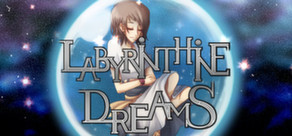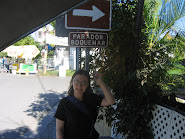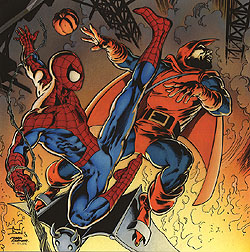After almost a decade of false starts and behind the scenes difficulty, a new adaptation of Stephen King's It is headed for theaters this September. I'm a huge fan of the story so I'll be writing a three-part series about it - first about the book, then the 1990 TV miniseries and finally the new film when it's released. Spoilers should be expected.
My introduction to the story was actually the miniseries, but we'll get into that next time. For now, I'll just note that I was highly interested in reading the book afterwards. I checked it out of my high school library of all places and was immediately absorbed in a way I hadn't yet experienced with a novel. I read that huge 1,200 page book over a long Thanksgiving weekend and have read it two more times in the years since. To this day, cracking it open to any page is like being sucked into a whirlpool and who knows how much time and pages will pass before I put it down and go about my business. It's hardly light reading, in fact it takes over a hundred pages just to fully establish the seven lead characters, but It is truly epic in a way that's very rare for the horror genre.
While the book is best known as the definitive killer clown story (plenty on that in a bit), the core of It is a story about a group of friends in Derry, Maine navigating the joys and hardships of childhood. It's quite similar to something like Stand by Me (which was based on another one of King's stories) or, to use a more recent example, Stranger Things. In the legendary first scene, which is also the most famous part of the TV version, a little boy named George Denbrough is killed by a clown that emerges from a storm drain.
The clown seized his arm.
And George saw the clown’s face change. What he saw then was terrible enough to make his worst imaginings of the thing in the cellar look like sweet dreams; what he saw destroyed his sanity in one clawing stroke.
"They float," the thing in the drain crooned in a clotted, chuckling voice. It held George’s arm in its thick and wormy grip, it pulled George toward that terrible darkness where the water rushed and roared and bellowed as it bore its cargo of storm debris toward the sea. George craned his neck away from that final blackness and began to scream into the rain, to scream mindlessly into the white autumn sky which curved above Derry on that day in the fall of 1957. His screams were shrill and piercing, and all up and down Witcham Street people came to their windows or bolted out onto their porches.
"They float," it growled, "they float, Georgie, and when you’re down here with me, you’ll float, too–"
George's shoulder socked against the cement of the curb and Dave Gardener, who had stayed home from his job at The Shoeboat that day because of the flood, saw only a small boy in a yellow rain-slicker, a small boy who was screaming and writhing in the gutter with muddy water surfing over his face and making his screams sound bubbly.
"Everything down here floats," that chuckling, rotten voice whispered, and suddenly there was a ripping noise and a flaring sheet of agony, and George Denbrough knew no more.
His older brother, Bill Denbrough, is arguably the book's main character and the story gives a lot of attention to his struggle with grief. Bill finds some solace with a newfound group of friends who begin to call themselves "the Losers Club." The other members include Ben Hanscomb, an overweight kid whose father died in the Korean War, Beverly Marsh, a tomboyish girl with an abusive father, Richie Tozier, a motormouthed kid who dreams of being a comedian, Eddie Kaspbrak, a meek boy with asthma and a domineering mother who clearly has some kind of Munchausen syndrome, Stan Uris, a neurotic Jewish boy in a not especially friendly town, and Mike Hanlon, a history buff who is one of the only black kids in town. Even without the monster living underneath Derry, the group would still have to contend with Henry Bowers, a psychopathic bully in true Stephen King tradition.
The kids bond when they realize they have all encountered a shape-shifting monster, often in the form of Pennywise the Clown. Unfamiliar with the creature's origins, they use the name "It." But what is It? As we eventually learn, It is an ancient creature from another universe that landed on Earth in prehistoric times, in a spot that would eventually become Derry. Centuries of coexisting with the creature has conditioned Derry's citizens to turn a blind eye to the constant disappearances and murders happening in their town. The monster's true form is a mass of orange light, the "deadlights," which will drive a person insane should they witness it. However, to influence events in our universe, It must anchor itself with a physical form, which turns out to be a giant spider. Pennywise is It's favored form since it helps the monster approach children. I find it amusing to think that if such a creature ever showed up in the real world, it would find that tactic totally ineffective thanks in large part to this book. Does anyone of any age want to approach a clown just hanging out by himself?
It can look into the minds of children and get a sense of their worst fears, however this turns out to also be a weakness if the creature doesn't fully understand the form it's taking on. In one scene, It attacks the kids in the form of a werewolf without realizing that all the children believe silver hurts werewolves, resulting in a painful surprise when Beverly hits It with a piece of silver fired from a slingshot. Because it relies so heavily on thoughts and imagination to find prey, a strong will and powerful imagination are good weapons against It. The only real way to defeat It is with the "Ritual of Chud," which is a psychic battle of wills that can severely injure the monster if the opponent is strong enough. Things get trippy for sure.
After driving off It in the 1950s, all of the kids eventually leave Derry except for Mike, who becomes the town's Library Director. There are a series of interludes that elaborate on Mike's research, establishing the pattern than It appears in Derry roughly once every 27 years and the creature's return is always heralded by some awful tragedy like a factory explosion or white supremacists setting a black-owned bar on fire. Sure enough, 27 years after the kids defeat It in 1958, a group of bigots attacks a gay couple and throws one of them off a bridge, where he is promptly finished off by Pennywise.
The other six members of the Losers Club have all moved on and forgotten most of those memories, but they all return at Mike's urging except for one. Stan is so terrified at the thought of facing the monster again that he kills himself and writes "IT" in blood on the wall. Now missing one of their own, the others also have to confront the reality that the childhood sense of wonder that allowed them to defeat It once has been compromised by exposure to the rational adult world. "You're too old to stop me!" Pennywise snarls at one point. "You're all too old!" The clown might be right.
I've been summarizing the book in chronological order, but the tale unfolds in a non-linear way, cutting back and forth between the 1950s and the 1980s until the final sequence, where both confrontations between the Losers Club and It are depicted simultaneously to dizzying effect. I won't go into too much detail about the final sequences yet. Better to save that for next time in order to compare it to the way the TV miniseries ended, which was very different.
So is this a perfect novel? Well, not quite. If you want that, check out Pet Sematary, which is also overdue for a new (and hopefully better) movie adaptation. I love It and consider it a great book, but there is one scene in particular that always bothers me. Anyone who has read the book already knows what I'm talking about. After the Loser's Club defeats It as children, they find themselves lost in the dark sewer tunnels on the way out. Visibility's totally gone and the kids are starting to panic. In order to calm everybody down, Beverly decides the best thing to do is get it on with all six of the boys, one at a time. Yeah, I know. It's gross. It's not eroticized or anything but it's still really gross. I don't get it. Wouldn't a group hug have been enough? I've had a number of conversations with other readers of this book that go exactly like this.
"It is one of my favorite books. I think it's brilliant, well except for that one scene."
"Oh yeah, THAT scene. What the hell was that about?"
It's safe to say that little scene, derisively referred to by fans as "the sewer orgy," won't find its way into any cinematic adaptation and you won't hear a single complaint from the readers. Even with that weird little tangent, the book is still an epic experience to read. It moves believably from a small-town America setting into overwhelming cosmic horror out of an H.P. Lovecraft story. Even though it can feel mentally exhausting by the end, I'm always drawn back to the huge scale and detail of its world. I think the reason it really resonates with me is the honest treatment of how cruel and scary the world can be to a child, especially when adults don't seem to care. However, the book also celebrates childhood and makes a strong case that we lose precious parts of ourselves when we're forced to grow up, parts that we may need if we ever want to get rid of the more down-to-Earth evil here in our world. For that reason alone, I suspect It will always be timeless.
Next time: The 1990 miniseries.
Sunday, June 11, 2017
Subscribe to:
Posts (Atom)





